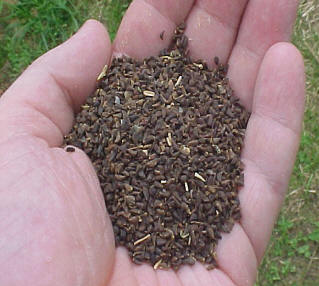 Submitted by SALAAM - Presider on
Submitted by SALAAM - Presider on

A person who wishes another ill, is jealous, envious, or angry towards another person, is said to have the evil eye. The evil eye can have negative consequences for the target of the ill feelings and there are rituals to remove the ill effects of the evil eye. The rituals extend to generally removing all evil lurking around a person and protecting a person against evil.
The concept of the evil eye and removing the effect of the evil eye has no discernable foundation in Zoroastrianism other than the determination to combat evil in all its forms at all times. The rituals to ward off evil are nevertheless a pervasive part of various Zoroastrian ceremonies. Even though some may relegate the concept to superstition, the various rituals to remove the evil eye add interest and tradition to the ceremonies of which they are a part.
The methods used to remove and ward off evil are practiced differently by Zoroastrians with origins in Iran and India. Zoroastrians from Iran burn espand while Zoroastrians from India perform the achu michu ritual.
One method for removing the effects of the evil eye is the burning of espand/esfand seeds. This practice is popular among the Zoroastrians of Iran, Afghanistan and Tajikistan and indeed for the rest of the mainly Muslim population in these countries.

Espand commonly refers to the dried seed of Peganum harmala, a perennial herb shrub from the Zygophyllaceae or Caltrop family, sometimes mistakenly called wild or Syrian rue. Espand grows in the arid regions Iran, Afghanistan, Tajikistan, Pakistan and India (where it is called harmal or harmala) to a height of thirty to sixty centimetres (one to two feet).
The method of using espand is to sprinkle the seeds on a bed of hot charcoals (any source will do) in a handheld container or censer. As the esfand burns, it pops and crackles producing an aromatic smoke that adds to the mystique. The censer is circled seven times over the head of the person receiving the ritual.

The name espand or esfand is the modern contracted form of the older Avestan name spenta armaiti meaning equanimity and the name of an archangel. While the number seven corresponds to the divine heptads of God and the six archangels, the seven circles of the smoking censer around the recipient's head, also limits the amount of smoke inhaled by the recipient.
In Afghanistan and Tajikistan, the ritual is particularly popular for removing the evil eye from children, newborns and the mothers, as for people returning from funerals. The person performing the espand on someone is called the espandi and espandis can be found selling their services on the street to passers who feel the need to have the effects of the eye evil removed. One can perform the espand on oneself.
Often, the prayer is replaced by this short poem, considered by some to be a version of a Zoroastrian prayer with Shah Naqshband as a replacement for Spendarmand (a later form of Spenta Armaiti and an earlier form of Espand).
The Dari (Afghan) version is:
Espand balaa band
Barakati Shah Naqshband
Jashmi heach jashmi khaish
Jashmi dost wa dooshmani bad andish
Be sosa der hamin atashi taze.
The Farsi (Tajik) version is:
Espand balla band
Ba haq shah-e-naqshband
Chashm-e-aaish chashm-e-khaysh
Chashm-e-adam-e bad andaysh
Besuzad dar atash-e-taiz
... both of which roughly translate to:
Espand stop (band) evil (bla or balla)
With King Naqshband's blessings / command
Eyes of none, eyes of relatives
Eyes of friends, eyes of enemies
Burn in this glowing fire.
The mention of fire here brings up the various concepts and symbolisms behind Fire in Zoroastrianism, one being its transformative nature and the second as a symbol of asha and wisdom's ability to overcome evil and ignorance represented by darkness.
http://www.heritageinstitute.com/zoroastrianism/purification/index.htm

- 16107 reads